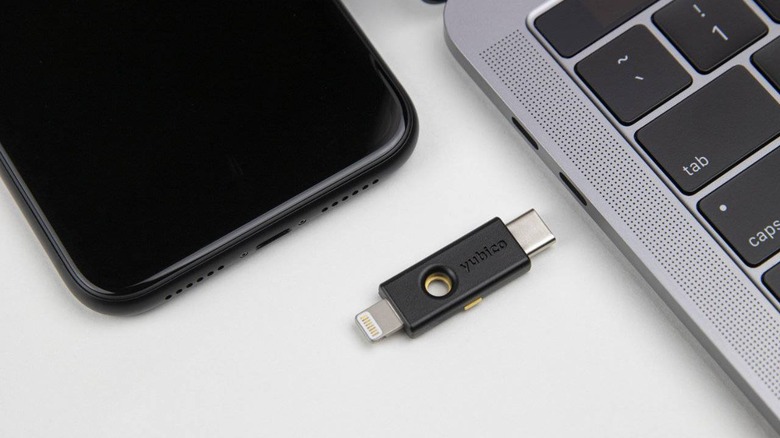
Depending on their device and whether or not the YubiKey is NFC-enabled, users may also be able to simply hold the key next to an NFC chip-equipped device to pair them through near-field communication. To pair a YubiKey with a compatible mobile device or computer, users may be able to physically plug the key in via a USB or other type of port. YubiKeys pair with several major password managers and many online services, such as social media sites, cloud storage and cryptocurrency, to add an extra layer of security to users’ passwords and other important information.

With the FIPS series, the device allows developers, businesses and government agencies to meet the highest level of authentication assurance level requirements. Users can even enable multifactor authentication by pairing a YubiKey with a one-time PIN.
/cdn.vox-cdn.com/uploads/chorus_image/image/65049763/5ci_plugged_iphone.0.jpg)
YubiKeys don’t require a network connection or rely on a certain type of software to run. Unlike other two-factor authentication methods, YubiKeys don’t store any of a user’s data, so even if the key itself is lost or stolen, there would be no way for another person to access the user’s information. Additionally, when a YubiKey is paired with a password manager, it ensures that even if a hacker uncovers a user’s master password, the rest of the user’s passwords remain protected. The devices also keep a user’s information from being shared between online services.


Two-factor or multifactor authentication works by requiring a person (or program) attempting to log in to an account to provide the service with something they know (a password) and something they have, such as a text message or physical device such as a YubiKey.īecause YubiKeys are unique physical devices, they can’t be hacked remotely. Using a YubiKey two-factor authentication device goes a long way in protecting passwords and a user’s other vital information from phishing attacks and hackers.


 0 kommentar(er)
0 kommentar(er)
